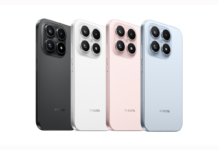When Huawei launched the Nova 4 last December with a 48MP Sony IMX586 sensor, we never thought as early as one month later, a handful of new ones would be launched with such large pixel camera. The Redmi Note 7 falls in that category which already has the Hisense U30 and soon the Honor View20. Xiaomi’s independent Redmi brand officially unveiled the Redmi Note 7 yesterday showing a cost-effective, quality model. As always, all aspects of the phone will be subjected to review and here you have the review of the Redmi Note 7’s camera samples as picked up on Chinese blog MyDrivers.

The Redmi Note 7 is promoted heavily with the big 48MP lens and that isn’t surprising. The 48MP sensor is the main camera and is a Samsung ISOCELL GM1 Ultra Clear sensor with a 1/2 inch size. The super-sensing area is second only to the SonyIMX600 sensor used in the Huawei P/Mate series flagship. It is on par with the Sony IMX586 sensor used on the Nova 4. The ultra-high pixels provide more detailed performance for Samsung GM1 products. Moreover, Samsung GM1 also adopts Quad Bayer pixel arrangement, which can combine four 0.8μm pixels into one by four-in-one pixel technology (Pixel binning). A large pixel of 1.6 μm (the output photo becomes 12MP) increases the amount of light entering the camera.

The Samsung ISOCELL GM1 hardware comes with some limitations which makes it necessary for some of the samples to be shot using professional mode when the 48MP sensor is to be deployed. While AI mode is deployed without HDR when the 12MP sensor is in use. Two sets of camera samples were taken for comparison.
For instance, the photo of the giant Starbucks coffee cup. Under the 48MP sensor, the font on the giant Starbucks coffee cup is still clear while it becomes slightly faint when Pixel binning is used to achieve a 12MP sensor. That shows the 48MP sensor gives more attention to details. Pixel binning comes to play when images are to be captured in low light conditions. By combining raw data from four pixels into one, the effective output is a higher amount of light captured, while reducing the noise generated. Without actually artificially boosting the “signal” (amount of light perceived by the sensor, usually done by increasing the ISO), the resulting image is much brighter when Pixel binning is used simply because of the combination of four pixel-data into one.
Read Also: The Xiaomi Redmi Note 7 Is Now Accepting Pre-Order On Giztop
Checking out the camera samples, the Redmi Note 7 could be said to have the best camera among the thousand yuan smartphones. The night shooting and daylight captures are all awesome. In addition, the AI mode in the camera is also quite user-friendly. When it is detected that the scene is backlit, the shooting options of “Backlight” and “Sketch” will pop up automatically. Even when shooting a Silhouette, the backlight and multi-frame will be synthesized to ensure the silhouette effect is captured.
Check out more samples from the Redmi Note 7 camera shutter.
















Comments